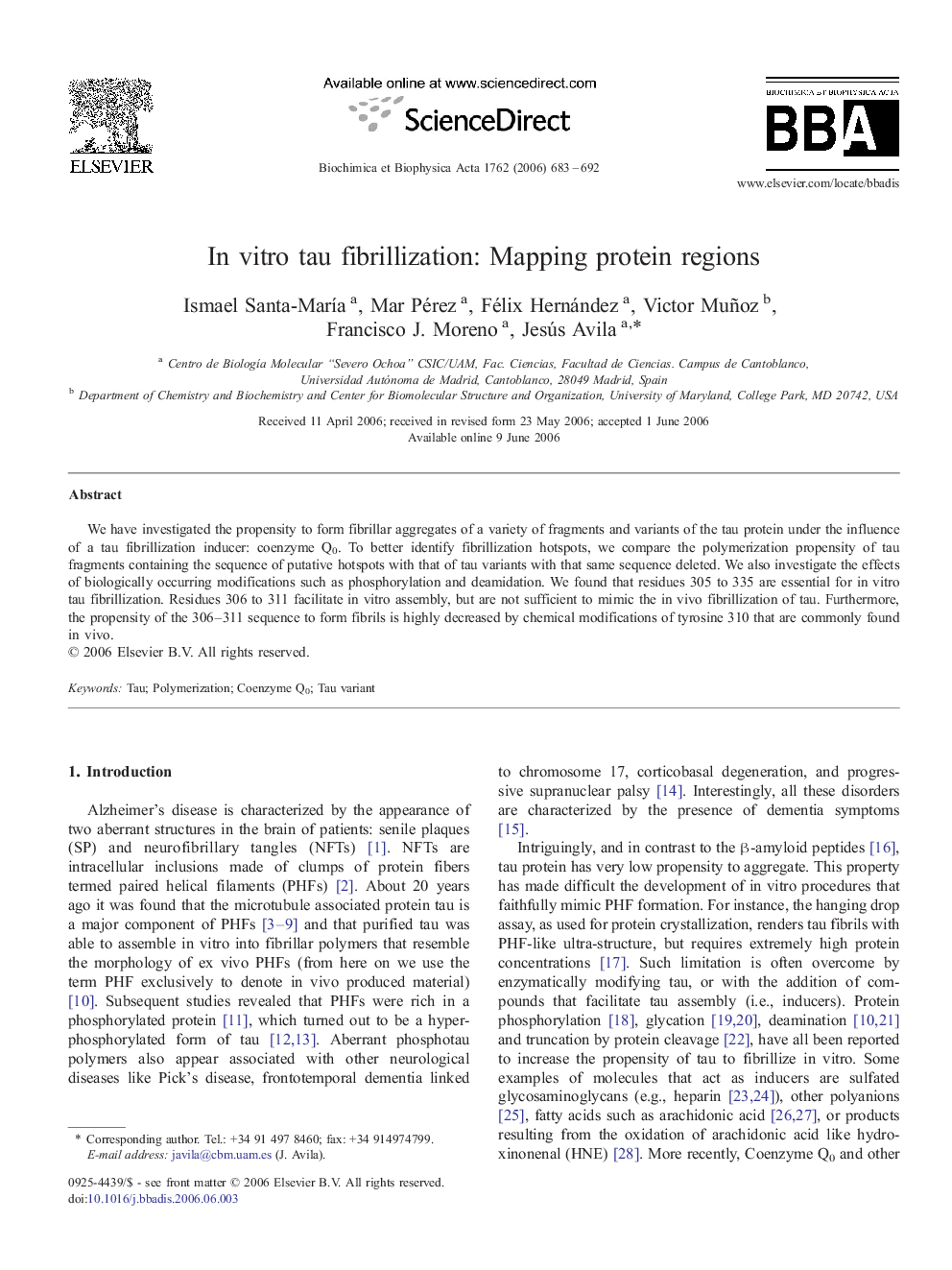| Article ID | Journal | Published Year | Pages | File Type |
|---|---|---|---|---|
| 1905936 | Biochimica et Biophysica Acta (BBA) - Molecular Basis of Disease | 2006 | 10 Pages |
We have investigated the propensity to form fibrillar aggregates of a variety of fragments and variants of the tau protein under the influence of a tau fibrillization inducer: coenzyme Q0. To better identify fibrillization hotspots, we compare the polymerization propensity of tau fragments containing the sequence of putative hotspots with that of tau variants with that same sequence deleted. We also investigate the effects of biologically occurring modifications such as phosphorylation and deamidation. We found that residues 305 to 335 are essential for in vitro tau fibrillization. Residues 306 to 311 facilitate in vitro assembly, but are not sufficient to mimic the in vivo fibrillization of tau. Furthermore, the propensity of the 306–311 sequence to form fibrils is highly decreased by chemical modifications of tyrosine 310 that are commonly found in vivo.
